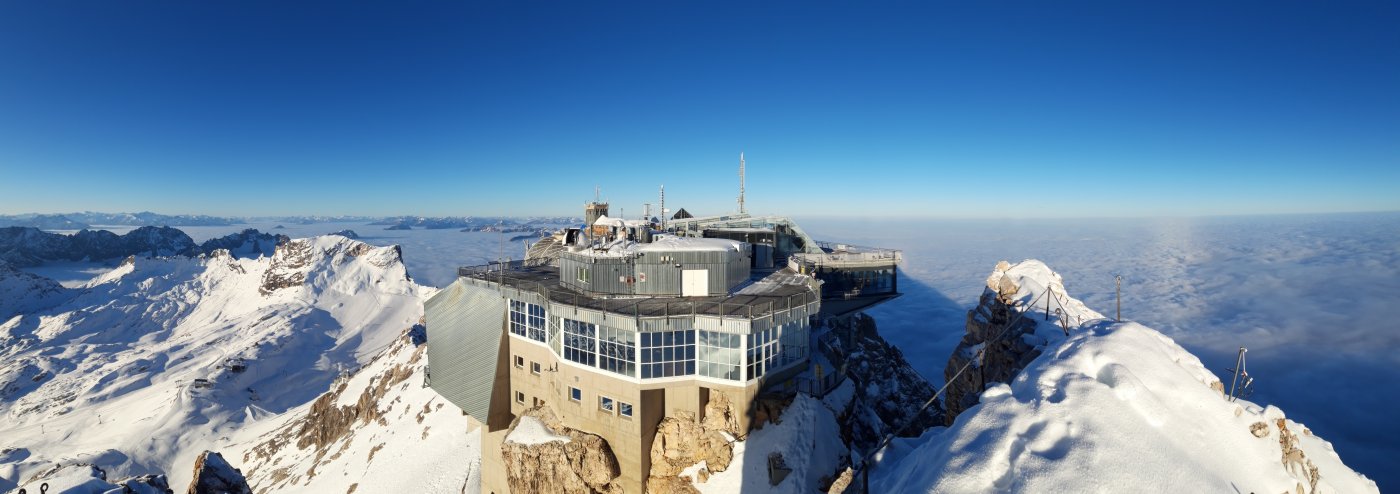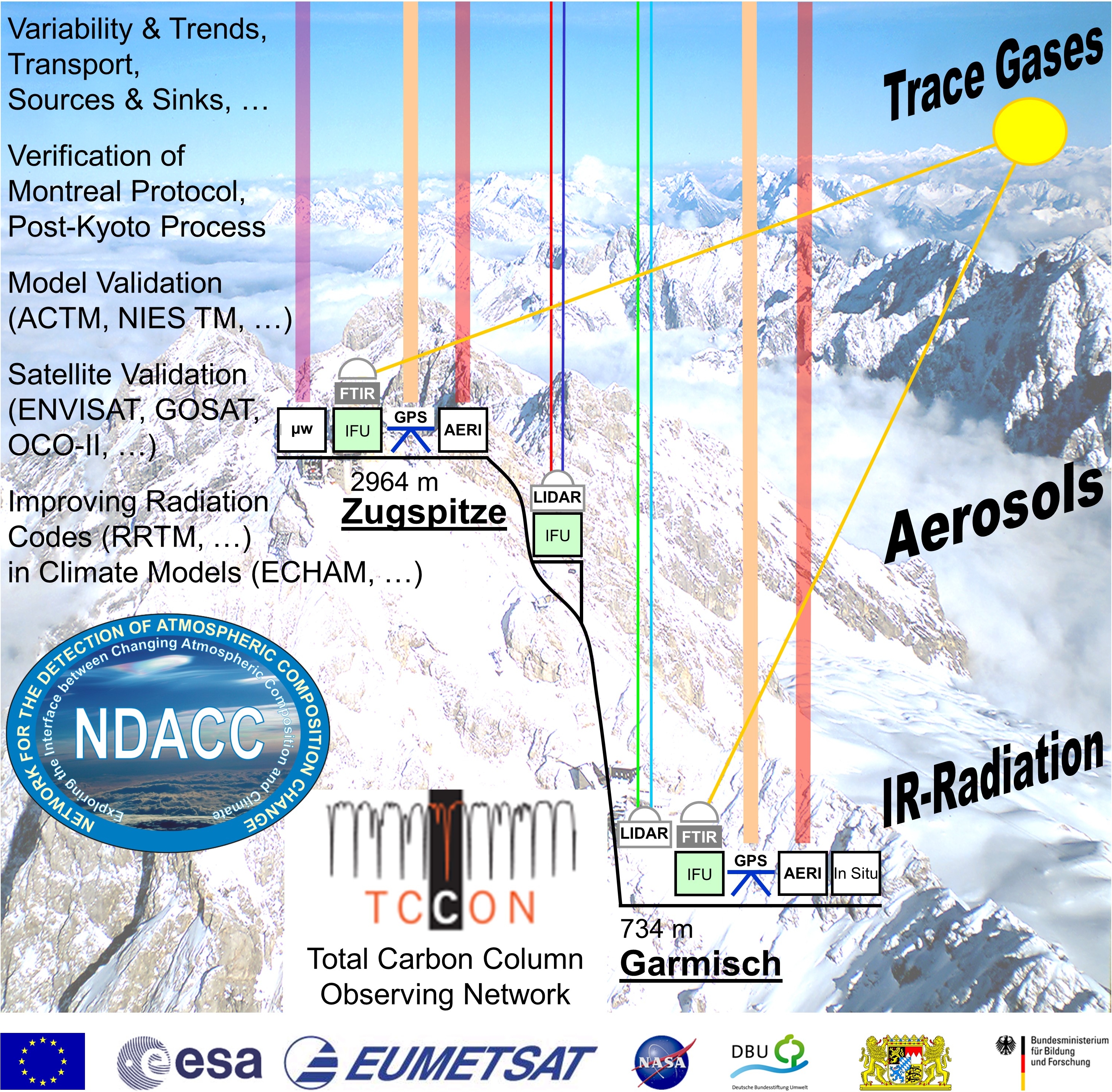
Atmospheric Variability and Trends
Our research team addresses key questions of climate sciences and carbon cycle research like:
- Can we infer “true” source attributions for greenhouse gases “top-down” from atmospheric measurements?
- Can we measure the designated atmospheric response to greenhouse gases emission reduction measures?
- Can we develop ground-based sounding systems to measure profiles of the most important greenhouse gas water vapor plus the related climate variable “temperature” in the boundary layer and in the otherwise unattainable stratosphere/mesosphere?
- Can we design atmospheric experiments to quantify radiative processes of greenhouse gases and clouds needed as input to improved climate models?
- Can we understand how earth is losing its cool using new-generation far-infrared spectroradiometers?
Our approach is to perform up-looking optical soundings of greenhouse gases, air pollutants, aerosols, and temperature along with observations of downwelling infrared radiation at the mid-latitude atmospheric observation facility Zugspitze (2964 m a.s.l.), Schneefernerhaus (2650 m a.s.l.), Garmisch (734 m a.s.l.). These soundings are covering the boundary layer to the stratosphere/mesosphere and are representative for regional to hemispheric scales. Atmospheric variability and trends measured on time scales of minutes to decades may be driven by natural or anthropogenic causes, and we try to understand the underlying mechanisms.
Our observational program is bearing some of the longest atmospheric measurement records existing to date; e.g., one of the three longest stratospheric aerosol lidar time series (since 1976 at Garmisch), a 25-year record of column-averaged methane (since 1995 at Zugspitze), and a series of column-averaged carbon dioxide since 2007 (at Garmisch). We are using instrumentation like solar Fourier-Transform-Infrared-Spectrometers (FTIR) in the mid-infrared and near infrared, lidars in the near infrared, visible, and ultra violet, up-looking spectroradiometers in the mid-infrared, far infrared, and microwave, plus sun photometers. Measurement raw data are analyzed via inverse numerical models to infer geophysical atmospheric parameters.
Our data contribute to globally coordinated efforts like the Network for the Detection of Atmospheric Composition Change (NDACC), the Total Carbon Column Observing Network (TCCON), the Aerosol Robotic Network (AERONET), and the European Aerosols, Clouds and Trace Gases Research Infrastructure (ACTRIS). These data are used for validation of numerical models and satellite missions of the atmosphere, e.g., the Orbiting Carbon Observatory (NASA-OCO-II) or the Far Infrared Outgoing Radiation Understanding and Monitoring Mission (ESA-FORUM) as well for monitoring the effectiveness of international agreements on emission regulations, e.g., the Montreal Protocol and the Paris Agreement.

